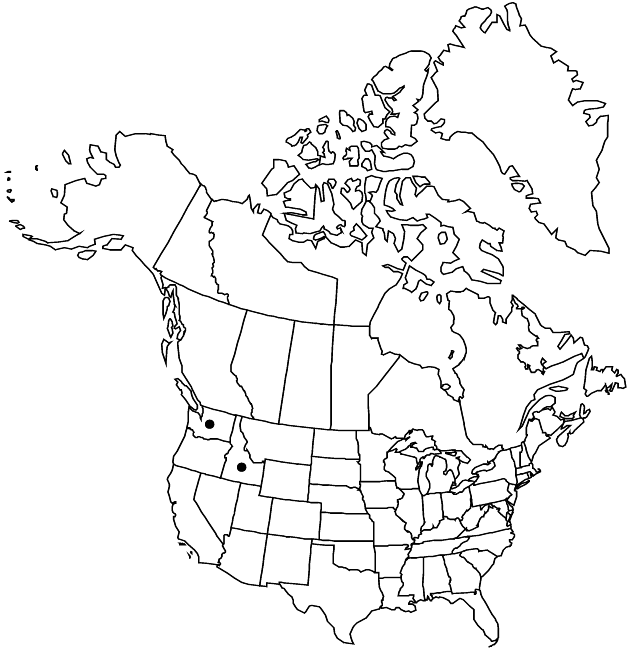Symphyotrichum jessicae
Phytologia 77: 283. 1995.
Perennials, 40–150 cm, colonial; long-rhizomatous. Stems 1–5+, ascending to erect, densely puberulent to lanate, especially distally. Leaves thickish, margins entire or shallowly crenate, apices acute to ± obtuse, faces densely lanate-puberulent; basal withering by flowering, petiolate, blades obovate to elliptic, 30–150 × 10–40 mm, bases cuneate to rounded, margins entire, ciliolate, apices acute, faces densely cinereous to lanate; proximalmost cauline sometimes withering by flowering, subpetiolate or sessile, blades obovate-lanceolate to elliptic, 50–100 × 10–25 (–35) mm, bases cuneate, clasping, ± auriculate, apices usually acute; distal sessile, blades 20–60 (–80) × 9–16 (–20) mm, bases rounded to auriculate. Heads in paniculiform, very leafy arrays, branches 4–10 (–20) cm. Peduncles densely lanate, bracts 1–8, elliptic, margins ciliolate, apices acute, puberulent. Involucres campanulate, 6–10 mm. Phyllaries in 4–6 series, oblanceolate (outer) to linear (inner), unequal, bases scarious (outer sometimes foliaceous), margins slightly scarious, entire, green zones obovate to elliptic, apices acute, faces densely lanate to cinereous. Ray-florets 18–40; corollas violet, laminae (8–) 12–20 × 1–2 (–2.5) mm. Disc-florets 35–80+; corollas yellow, 6–9 mm, lobes triangular, 0.4–1 mm. Cypselae brown, cylindric to obovoid, not compressed, 3.5–4.5 mm, 4–5-nerved, faces sparsely hairy; pappi tawny, (6–) 7–9 mm. 2n = 80.
Phenology: Flowering Aug–Sep.
Habitat: Dry grasslands, meadows, stream banks, openings in Ponderosa pine woodlands
Elevation: 500–1200 m
Discussion
Of conservation concern.
Symphyotrichum jessicae is known only from the Palouse and Clearwater river drainages of eastern Washington and adjacent northwestern Idaho.
Selected References
None.
Lower Taxa
"thickish" is not a number.
